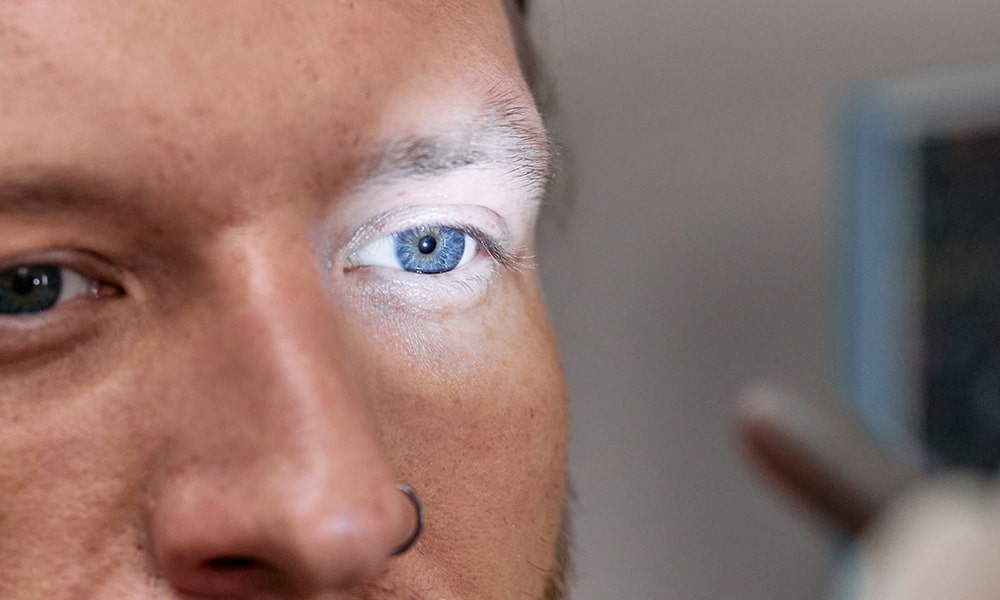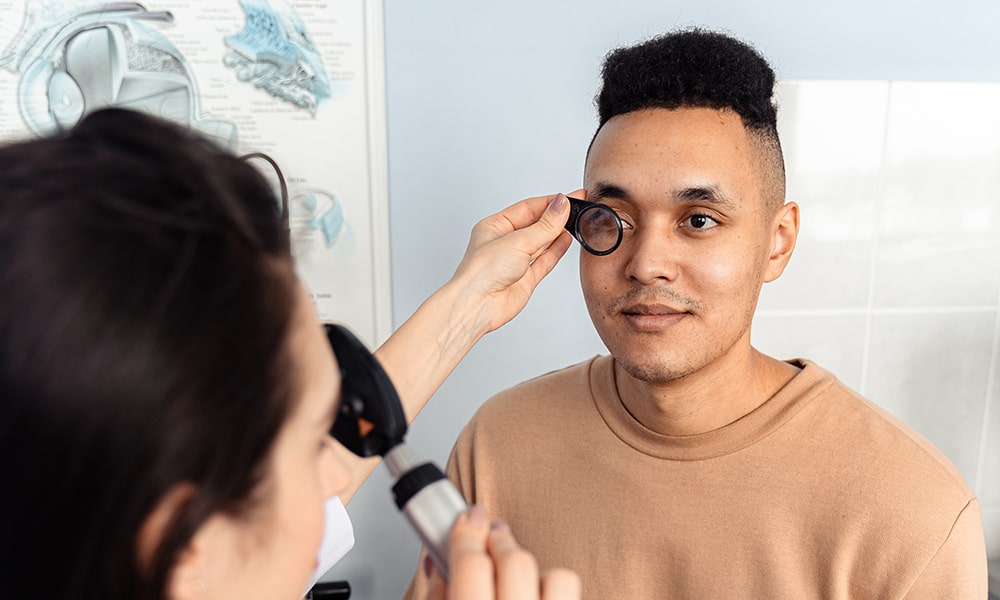
Macular degeneration, often referred to as age-related macular degeneration (AMD), is a common eye condition and a leading cause of vision loss among people aged 50 and older. It affects the central vision, which is crucial for activities like reading, driving, and recognising faces. As it progresses gradually, understanding the early warning signs is essential for timely treatment and intervention.
What is the macula?
The macula, derived from the Latin word for “spot”, is an incredibly important part of the human eye. Situated centrally in the retina, the macula plays a pivotal role in our ability to see with clarity.
Structure and location: The retina is a thin layer of tissue that lines the back of the eye, acting like the film in a camera. It captures light and sends these images to the brain via the optic nerve. At the center of this retina lies the macula, a small and highly sensitive area, just about 5.5 mm in size.
Function: The primary responsibility of the macula is to process sharp, clear, central vision (or “straight-ahead” vision). It is responsible for our ability to read, recognise faces, drive, watch television, and any other activity that requires us to see fine details. The macula also plays a significant role in color vision. The central portion of the macula, called the fovea, contains a high concentration of cone cells, which are responsible for color vision under daylight conditions.
Role in eye health: Since the macula is vital for sharp vision, any damage or deterioration to this area can lead to significant vision impairment. Therefore, maintaining macular health is crucial for preserving good vision throughout life.

Early warning signs of macular degeneration
Age-related macular degeneration (AMD) is a disease that blights the macula. As it progresses, it can lead to severe vision loss, particularly in the central field of vision. While it typically affects older adults, recognising its early signs is crucial for timely intervention.
- Blurred central vision: This often emerges as the initial symptom. Individuals might observe a small blurred area near the center of their vision, making it tough to see objects clearly. Over time, this blurred region can enlarge, or blank patches might appear in the central vision.
- Distorted vision: A classic sign of AMD is when straight lines start appearing wavy or bent. This distortion can be subtle initially but can become more prominent as the disease progresses. For instance, door frames, which are straight, may appear bent or distorted.
- Alteration in color perception: As AMD impacts the macula, where many cone cells (responsible for color vision) are located, individuals may start noticing that colors appear less bright or vibrant. In some cases, colors might seem washed out or faded.
- Difficulty seeing details: This can be both up-close and at a distance. Activities like threading a needle or recognising faces from afar can become challenging.
- Dark, blotchy areas: As the disease advances, one might notice the appearance of shadowy or dark areas in the central vision. This is due to the damage in the macula where cells are not receiving appropriate nutrients or are dying.
- Increased sensitivity to glare: People with early-stage AMD might find that they’re more sensitive to bright lights or experience a longer time adapting from dark to light surroundings and vice versa.
Regular eye check-ups and being aware of these symptoms can lead to early detection, which is vital for slowing the progression of the disease and maintaining good vision. If any of these signs manifest, it’s imperative to consult an eye specialist promptly.

Risk factors and prevention
It’s crucial to note that while anyone can develop AMD, some factors increase its risk:
- Age: It’s most commonly diagnosed in those over 50.
- Genetics: A family history of AMD can increase your risk.
- Smoking: Regular tobacco use can significantly increase the risk of AMD.
- Race: Caucasians are more likely to develop AMD than people of African or Asian descent.
- Heart disease, high blood pressure and cholesterol: These can increase the risk due to their effect on the blood vessels of the eyes.
Adopting a healthy lifestyle by avoiding smoking, managing heart-related conditions, taking eye supplements and including leafy greens and fish in your diet can help lower your risk of AMD. Regular eye check-ups can help detect AMD in its early stages.
The importance of early detection
Early detection in any medical scenario can often be the difference between a manageable condition and a severe one. In the context of vision and eye diseases like macular degeneration, the significance of early detection becomes paramount for numerous reasons.
- Preservation of vision: The primary objective of detecting any eye condition early is to safeguard one’s vision. Conditions like macular degeneration can lead to irreversible vision loss. But if caught early, interventions can halt or slow down the disease’s progression, allowing individuals to retain their sight for a longer duration.
- Better treatment outcomes: When conditions are identified in their nascent stages, the available treatments tend to be more effective. The damage is minimal, so therapeutic interventions can stabilize the condition or even lead to improvement in some cases.
- Avoidance of complications: Eye diseases can sometimes lead to other complications. For instance, a person struggling with diminishing vision might be at a higher risk of falls or accidents. Early detection can prevent such secondary complications by ensuring that vision remains as optimal as possible.
- Cost-effectiveness: Treating any condition in its advanced stages can be both challenging and expensive. Hospitalisations, multiple treatments, or advanced therapies can weigh heavily on one’s finances. Early detection can often lead to simpler and more affordable treatments, saving both money and distress in the long run.
- Improved quality of life: Vision plays a crucial role in our daily lives, from reading and driving to recognising loved ones’ faces. Detecting potential problems early can ensure that individuals continue to enjoy these daily activities without significant disruption. This contributes immensely to their overall well-being and quality of life.
- Emotional well-being: Receiving a diagnosis of a severe eye condition, especially when it’s progressed to an advanced stage, can be emotionally taxing. The prospect of vision loss can lead to feelings of anxiety, depression, or isolation. Early detection can alleviate some of this emotional burden by providing hope and more manageable treatment options.
- Educational and support opportunities: When an eye condition is detected early, patients have the time and opportunity to educate themselves about their condition. They can seek support groups, counseling, and other resources to help them navigate the challenges ahead.
Macular degeneration is a condition that should not be overlooked. While its progression can be slow, the loss of central vision can drastically impact day-to-day activities. Recognising early warning signs and getting regular eye check-ups are essential steps to managing and potentially slowing down this eye condition. Always consult with an ophthalmologist or optometrist if you notice any changes in your vision.





